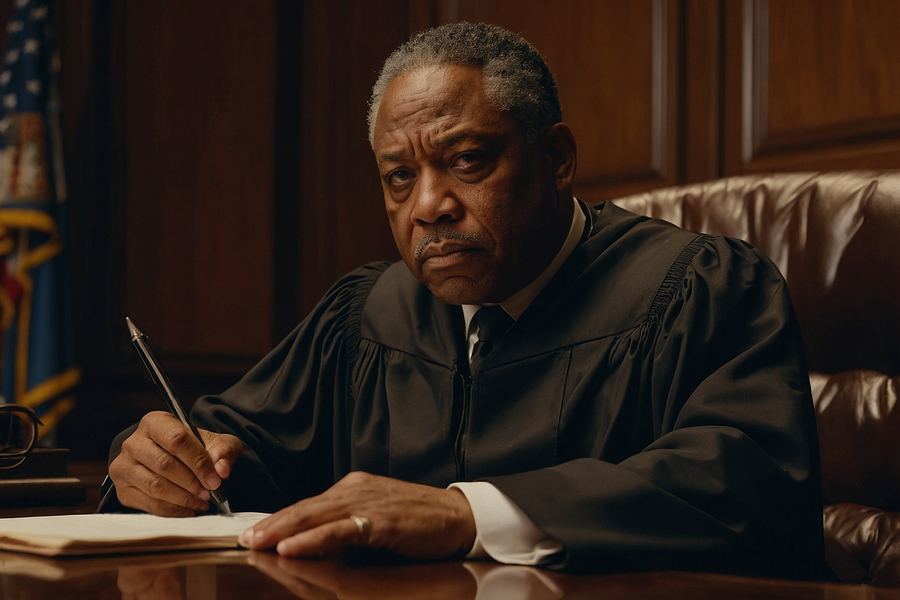The sight of barristers wearing wigs in court is one of the most iconic images of the legal profession. But why do barristers wear wigs, and what purpose do they serve? This tradition, rooted in history and symbolism, dates back to the 17th century and remains a significant aspect of legal proceedings in some countries today. While wigs may seem antiquated, they carry cultural and professional weight, symbolizing impartiality, formality, and equality before the law. In this article, we will delve into the history, reasons, and ongoing relevance of barristers wearing wigs in modern courts, providing a comprehensive look at this fascinating legal custom.
Why do barristers wear wigs?
Barristers wear wigs as part of a long-standing legal tradition that dates back to the 17th century. Wigs symbolize professionalism, anonymity, and equality before the law, helping to separate a barrister’s identity from their role in court. They also represent formality and respect for legal proceedings. Although some jurisdictions have phased out this practice, many retain it as a nod to tradition and the authority of the legal system.
The Historical Origins of Barristers Wearing Wigs
The tradition of barristers wearing wigs can be traced back to the late 1600s. During this period, wigs were a common fashion accessory among the upper class and the judiciary. Influenced by King Charles II, who popularized wigs in England, the legal profession adopted them as a sign of authority and respectability.
Barristers initially wore wigs to align with the societal norms of the time. Over the centuries, as wigs fell out of fashion in everyday life, they remained a staple in the courtroom. This continuity reinforced the legal system’s dedication to tradition and impartiality.
Wigs were also believed to add a sense of gravitas to court proceedings, emphasizing the seriousness of legal matters. They created a visual representation of authority and professionalism, helping distinguish legal practitioners from the public.
Even today, in countries like the UK, Ireland, and some Commonwealth nations, barristers wear wigs during specific court proceedings. This practice links the modern legal profession to its historical roots, maintaining a sense of continuity and tradition.
While some may view wigs as outdated, they remain an essential symbol of the legal profession’s respect for its heritage and the principles of justice.
Why Do Barristers Wear Wigs? Exploring Key Reasons
Symbolism of Wigs in the Legal Profession
Wigs in the legal profession carry deep symbolic significance, representing impartiality, equality, and respect for the legal process. By wearing wigs, barristers visually emphasize their role as representatives of the law rather than their interests. The wig acts as a neutralizing factor, reminding all parties that the focus is on justice and fairness rather than the individual identities of those involved in the case. This symbolism reinforces the notion that the legal system operates independently of personal biases or societal status.
Wigs Promote Anonymity in Court
An essential aspect of wigs in court is their ability to promote anonymity. By concealing personal appearances, wigs help shift attention from the barrister to the case at hand. This anonymity reinforces the idea that legal professionals are conduits for justice, rather than personal advocates. This practice ensures that arguments and evidence take center stage, reducing distractions related to individual identities or personal characteristics.
Wigs Reflect Tradition and Continuity
The tradition of wearing wigs connects modern barristers to centuries of legal history. This practice, which dates back to the 17th century, symbolizes continuity and respect for long standing customs. While wigs may seem outdated in a modern context, their use reflects the legal profession’s adherence to tradition and its dedication to upholding the principles of justice that have guided courts for centuries. For many, wigs serve as a visual reminder of the legal system’s roots and the importance of preserving its legacy.
Formality and Authority
Wigs add an undeniable sense of formality and authority to courtrooms. Their distinctive appearance emphasizes the solemnity of legal proceedings and the importance of adhering to the rule of law. The presence of wigs in court elevates the atmosphere, underscoring the gravity of the decisions being made and the responsibilities of those involved in the legal process.
Jurisdictional Variations in Wig-Wearing
The use of wigs in the legal profession varies across jurisdictions. While some countries, such as the United Kingdom and Ireland, continue to use wigs in specific court cases, others have moved away from this tradition. In places where wigs are still worn, they are often reserved for criminal trials or ceremonial occasions, maintaining their connection to historical practices. However, in many modern legal systems, the use of wigs has diminished, reflecting changing attitudes toward tradition and professional attire.
Advantages of Wearing Wigs in Court
Barristers continue to wear wigs in court due to their functional and symbolic advantages. This long-standing tradition serves multiple purposes, both practical and ceremonial, contributing to the decorum and gravity of legal proceedings. Here are the key reasons why wigs remain an integral part of the legal profession:
- Professionalism: Wigs contribute to maintaining a sense of decorum and professionalism in the courtroom. Their formal appearance underscores the serious nature of legal proceedings and reinforces the expectation of appropriate conduct from all parties involved.
- Equality: One of the key benefits of wearing wigs is the sense of equality they create. Wigs promote visual uniformity, helping to minimize distinctions based on social status, personal appearance, or individuality. This uniformity ensures that the focus remains on the legal arguments rather than the individuals presenting them.
- Focus on Legal Arguments: By masking personal features and identities, wigs help to shift the attention in courtrooms away from the barristers and onto the case itself. This focus ensures that the proceedings are centered on the evidence and legal arguments, rather than being influenced by personal characteristics or biases.
- Respect for Tradition: The continued use of wigs reflects a deep respect for the traditions of the legal profession. Wigs are a symbol of the continuity and stability of the legal system, reinforcing the seriousness and solemnity of court proceedings. For many, this adherence to tradition underscores the timeless nature of justice.
- Authority: Wigs serve as a visual representation of the authority and expertise of barristers. By wearing them, barristers signal their role as officers of the court, emphasizing their responsibility to uphold the law and advocate for justice.
How the Practice of Wearing Wigs Has Evolved
The practice of barristers wearing wigs has evolved significantly over the centuries. Initially, wigs were mandatory for all legal practitioners, but modern reforms have introduced flexibility.
The tradition of wearing wigs in the legal profession has evolved significantly over time, shaped by changes in fashion, societal norms, and practical considerations. Below are key aspects of how wig-wearing has developed and adapted:
- Changes in Fashion and Social Norms: Wigs were once a common fashion accessory in the 17th and 18th centuries, worn by members of the upper class and professionals. As they fell out of everyday fashion, their use became exclusive to the legal profession. This transition reinforced the association of wigs with the formal and authoritative nature of court proceedings, distinguishing barristers and judges from the general public.
- Jurisdictions That Retain Wig-Wearing Traditions: Despite their decline in general use, some jurisdictions, such as the United Kingdom and Ireland, continue to require wigs in specific court settings. They are most commonly worn during criminal trials or ceremonial occasions, symbolizing tradition and authority in the courtroom. These countries view wigs as a vital element of their legal heritage, preserving a sense of continuity in their judicial systems.
- Abolishment in Some Legal Systems: Many modern legal systems, including those in the United States and Canada, have moved away from wearing wigs. These jurisdictions consider wigs to be outdated and unnecessary for contemporary legal proceedings. Instead, they emphasize professional attire such as robes, which maintain formality without the historical connotations of wigs.
- Contemporary Debates on Wig-Wearing: The continued use of wigs has sparked debates among legal professionals and the public. Critics argue that wigs are anachronistic and irrelevant in today’s modern legal system. Supporters, however, highlight their symbolic value, pointing to their role in maintaining decorum, impartiality, and respect for tradition.
- Adaptations in Wig Design: To address practical concerns, modern wigs have undergone significant adaptations. They are now made from lightweight materials, making them more comfortable to wear for extended periods. These changes ensure that barristers and judges can maintain tradition without compromising comfort and functionality.
What Makes Legal Wigs Unique?
Design and Material
Legal wigs are traditionally crafted from high-quality horsehair, which is carefully treated and styled to create their distinct appearance. The choice of horsehair ensures durability and the ability to retain shape over time, making the wigs both practical and symbolic. Their unique design signifies authority and professionalism, reinforcing the wearer’s role within the legal system. The intricate styling of legal wigs, including their curls and structure, is a visual marker of tradition, adding to the formal atmosphere of the courtroom.
Types of Wigs for Legal Professionals
There are two main types of wigs worn by legal professionals, each serving a distinct purpose. Full-bottomed wigs, typically worn by judges during ceremonial occasions, are long and elaborate, symbolizing their high rank and the gravity of their role in the justice system. These wigs are often reserved for special events such as swearing-in ceremonies or significant trials.
In contrast, barrister’s wigs are shorter and less elaborate, designed for regular use in daily court proceedings. Their practical design ensures that barristers can wear them comfortably while still maintaining the formal appearance required in the courtroom. These distinctions in wig styles reflect the varying responsibilities and hierarchies within the legal profession.
Maintenance of Legal Wigs
Legal wigs require meticulous care to maintain their appearance and longevity. Barristers and judges often follow specific cleaning and storage routines to keep their wigs in pristine condition. Proper maintenance ensures that the wigs retain their symbolic value and remain suitable for courtroom use for many years. This level of care reflects the respect legal professionals have for the traditions and tools of their profession.
Cost of Legal Wigs
Legal wigs are known for their high cost, which reflects their craftsmanship, materials, and historical significance. Each wig is handcrafted to meet exacting standards, ensuring it meets the professional and symbolic requirements of the legal system. This investment underscores the importance placed on tradition and professionalism within the legal community.
Symbolic Differences Between Wigs
The differences in wig styles for judges and barristers signify their distinct roles within the courtroom. Judges’ wigs, with their elaborate design, symbolize authority and the weight of judicial decisions. Barristers’ wigs, by comparison, are more understated, representing their role as advocates for justice. These variations reinforce the structure and hierarchy of the legal profession, ensuring that each role is visually distinguished while contributing to the formal atmosphere of the court.
Final Word
The question, “Why do barristers wear wigs?” highlights the rich history and enduring traditions of the legal profession. Wigs symbolize professionalism, impartiality, and respect for the legal process. While some jurisdictions have moved away from this custom, many continue to uphold it as a nod to the values of tradition and authority. The practice may evolve, but its significance in connecting modern legal systems to their historical roots remains profound.
FAQ’s
Q: Why did barristers start wearing wigs?
A: Barristers began wearing wigs in the 17th century to align with societal norms and establish authority and respectability in court.
Q: Do all barristers wear wigs?
A: Not all barristers wear wigs. The practice depends on the jurisdiction and the type of case being heard.
Q: What are legal wigs made from?
A: Legal wigs are traditionally made from horsehair, though modern versions may use synthetic materials.
Q: Are wigs mandatory for barristers today?
A: In some jurisdictions, wigs are mandatory for specific court cases, particularly criminal trials. However, others have phased out the practice.
Q: Why are wigs important in the legal profession?
A: Wigs symbolize professionalism, impartiality, and continuity, helping to maintain decorum in court proceedings.




